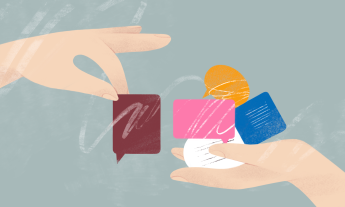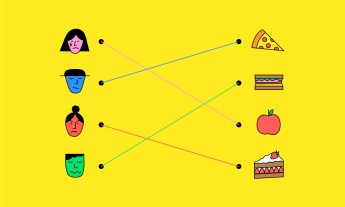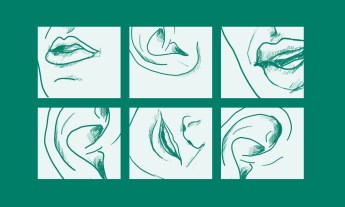
This post is part of TED’s “How to Be a Better Human” series, each of which contains a piece of helpful advice from people in the TED community; browse through all the posts here.
It’s happened to all of us: You’re sitting down for dinner with an old friend to catch up. You’re in the middle of sharing an anecdote when their phone dings. Their eyes shift to the screen, and they slide their device into their lap to send a reply.
Most of us have been on both sides of this scenario, and while it may seem harmless, these kinds of distractions during our everyday interactions can make people feel unheard or unimportant, fragment our attention, and hurt our relationships. On the other hand, research shows that active listening — putting your full focus on your conversational partner to truly understand their message — can help us anticipate problems, resolve conflicts, expand our knowledge and build trust.
Like any skill, active listening can be practiced and cultivated. Here are three key ways to become a better listener:
1. Put away your phone (and other distractions)
Have you ever had your work email open with a movie playing in the background while you’re also texting with a friend? When we multitask, our attention is divided between multiple streams of information — and we’re not great at taking it all in.
In his TED Talk, musician and “Song Exploder” podcast host Hrishikesh Hirway compares multitasking to “trying to listen to a song while singing a different song in your head.” As he points out, “You can’t do it — or you can’t do it well. And you can’t fully appreciate what someone else is saying if you’re thinking about something else.”
“The instinct to multitask is so hard to turn off, but it’s so important that you do it,” says musician and podcast host Hrishikesh Hirway.
This might not be a big deal when the stakes are low, like you’re watching TV while knitting a scarf. But when the tasks are more complex — like watching TV while texting with a friend who’s in a crisis or studying for an exam — multitasking can have a negative impact. If you really want to be an active, empathic listener, you need to put away your devices and be fully present. And yes, we know it’s easier said than done. “The instinct to multitask is so hard to turn off, but it’s so important that you do it,” Hirway says.
Our distractions aren’t always external, either. Studies have shown that mind-wandering — when your focus shifts away from the present moment and towards your internal thoughts and feelings — can lead to decreased mood, task performance and reading comprehension. So when you find yourself zoning out or daydreaming during a conversation, just recognize that it’s happening and bring yourself back to what’s going on right in front of you.
2. Reflect back what you’ve heard
A big part of active listening is, well, listening. But the best listeners aren’t just statues absorbing information — they also know what to say and when to say it.
DO:
- Ask questions. Posing clarifying or open-ended questions says to the other person you’re paying attention and encourages them to elaborate. It can also help them gain new insights and explore avenues they haven’t previously thought of.
- Summarize. Periodically paraphrasing the other person’s message can help make them feel seen and heard and build trust. To do this, use phrases like “What I’m hearing you say is …” or “I can understand how that situation could make you feel like …”
- Listen without judgment. Make the other person feel supported and safe — and not judged. This means being accepting of their beliefs, values and experiences, even when they’re different from your own.
Silences do serve a function — they give both the speaker and listener the space to process the information being shared.
DON’T:
- Give in to the pressure to fill silences. Even though gaps in a conversation can feel awkward, silences do serve a function — they give both the speaker and listener the space to process the information being shared. This can ultimately lead to deeper, more thoughtful conversations.
- Jump in with your own story. “I used to think that this was actually the best way to show that I was really listening,” Hirway says. “Someone would tell me something and I’d say, ‘That reminds me of this thing that happened to me,’ and then I would tell a whole story of my own.” Instead, stay engaged without making it all about you.
3. Let nonverbal cues speak for you, too
“I’m also a big believer in the power of nonverbal communication,” Hirway says. “Just the simple act of a nod is a way to let the other person know that you’re engaged and also invites them to keep going and say more. That kind of intentional, engaged silence makes space for them.”
Nonverbal communication — the ways we express thoughts or messages without speech, like our facial expressions, body movement, posture, eye contact or touch — can be just as powerful as what we say out loud.
Let the other person know that you’re engaged, and do it without taking your focus away from them and turning it onto you.
That’s because our facial expressions reflect our internal states — and this is a vital social skill that we begin developing from an early age. In fact, studies show that infants have a visual preference for faces, especially those with open eyes and a direct gaze.
While it’s important to note that there are cultural differences in nonverbal communication, here are some basics:
- Make eye contact. Direct eye contact is a fundamental nonverbal communication skill — it signals healthy bonding between mothers and infants and impacts trust between patients and physicians. Simply put: Looking someone in the eye while they’re speaking indicates that you’re interested and invites them to continue sharing. Experts recommend using the 50/70 rule: Try to maintain eye contact 50 percent of the time when speaking, and 70 percent of the time when listening.
- Have an open posture. Active listeners often lean slightly towards the other person or tilt their head. On the other hand, if you turn away from them or look away while they’re speaking, you’ll likely appear disengaged.
- Mirror facial expressions. Reflecting the other person’s emotions can show you empathize. And when your facial expressions don’t match what they’re saying — for example, smiling while they’re telling you about a past challenge — it can seem like you’re not paying attention or you’re not taking them seriously.
Ultimately, being a great listener takes practice — and we may not always get it right. But if you can remember these few simple steps, you’ll be well on your way. “Be open to new ideas. Stop multitasking,” Hirway says. “Let the other person know that you’re engaged, and do it without taking your focus away from them and turning it onto you.”
Watch Hrishikesh Hirway’s full talk here:











